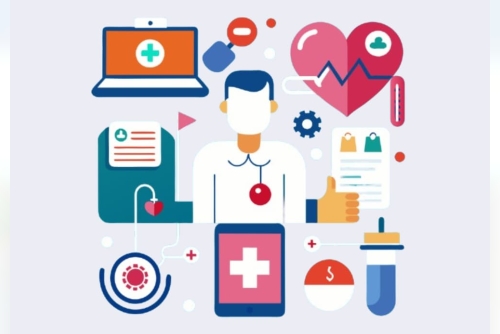In today’s healthcare landscape, patient engagement has become a critical component of delivering high-quality care. Hospitals are increasingly turning to digital solutions, known as patient engagement tools, to enhance communication, improve care coordination, and empower patients to take control of their health journey. These tools have the potential to transform how hospitals interact with patients, resulting in better outcomes and greater patient satisfaction.
In this guide, we will explore the key types of patient engagement tools, their benefits, and how hospitals can effectively implement them to improve the patient experience.
What Are Patient Engagement Tools?Patient engagement tools are technologies designed to help healthcare providers interact with patients more efficiently. These tools can include everything from online portals where patients can access their medical records to mobile apps that send reminders for upcoming appointments or medication refills. By integrating these tools into their operations, hospitals can foster a more patient-centric approach to care.
Importance of Patient Engagement Tools for HospitalsPatient engagement tools play a pivotal role in modern healthcare. Engaging patients throughout their care journey can result in better adherence to treatment plans, fewer hospital readmissions, and improved patient satisfaction. The shift toward value-based care, where providers are reimbursed based on patient outcomes rather than the volume of services, has further highlighted the importance of these tools in the healthcare ecosystem.
Some of the key reasons why hospitals are investing in patient engagement tools include:
Improved Patient Satisfaction: Engaging patients in their healthcare journey leads to a more positive experience, resulting in higher patient satisfaction scores.Better Health Outcomes: Empowered patients are more likely to follow treatment plans and manage chronic conditions effectively.Reduced Readmissions: Tools that track patient progress post-discharge can help reduce the likelihood of readmission, a key performance metric for hospitals.Operational Efficiency: Automated scheduling, reminders, and patient communication reduce the administrative burden on hospital staff, allowing them to focus on care delivery.Types of Patient Engagement ToolsHospitals have a variety of patient engagement tools at their disposal. These tools can be categorized into several key areas based on their primary function.
1. Patient PortalsPatient portals are secure online platforms where patients can access their medical records, test results, and treatment plans. These portals typically allow patients to communicate with their healthcare providers, schedule appointments, and request prescription refills.
Benefits of Patient Portals:
Provides 24/7 access to health informationFacilitates communication between patients and providersEnhances transparency in the care processFeatureBenefitsAccess to Medical RecordsPatients can view test results, diagnoses, and prescriptions anytimeAppointment SchedulingStreamlines the process of booking appointmentsSecure MessagingDirect communication with healthcare providersBilling InformationPatients can view and pay bills online2. Telehealth SolutionsTelehealth is one of the most transformative patient engagement tools. It allows patients to consult with their healthcare providers via video calls or online chat, eliminating the need for in-person visits in many cases.
Benefits of Telehealth Solutions:
Increases access to care, especially for remote patientsReduces wait times and travel costs for patientsEncourages timely follow-ups and chronic disease management3. Mobile Health AppsMobile health (mHealth) apps enable patients to track their health data, manage medication schedules, and receive reminders for upcoming appointments. These apps are particularly useful for patients with chronic conditions like diabetes or hypertension, who need to monitor their health regularly.
Benefits of Mobile Health Apps:
Encourages patient self-managementProvides real-time health trackingFacilitates communication through push notifications4. Remote Patient MonitoringRemote patient monitoring (RPM) tools allow healthcare providers to monitor patients' vital signs and health data remotely. This is particularly valuable for patients with chronic diseases, post-surgical recovery, or during at-home care.
Benefits of Remote Patient Monitoring:
Reduces hospital visitsImproves care for chronic disease patientsProvides real-time data to healthcare providers5. Automated Communication SystemsAutomated systems, such as chatbots or text message services, send reminders to patients about upcoming appointments, medication refills, or preventive care needs. These systems can also offer information on treatment plans or procedures, ensuring patients stay informed.
Benefits of Automated Communication Systems:
Reduces no-shows for appointmentsEncourages adherence to treatment plansSaves staff time on follow-up communication6. Patient Education ToolsPatient education tools help hospitals deliver relevant health information directly to patients, whether through online resources, videos, or printed materials. These tools can be integrated with patient portals or mobile apps to provide ongoing education tailored to individual needs.
Benefits of Patient Education Tools:
Increases health literacyImproves patient understanding of their conditionEncourages informed decision-makingImplementing Patient Engagement Tools in HospitalsImplementing patient engagement tools effectively requires strategic planning, staff training, and ongoing evaluation. Here are some key steps hospitals should consider when integrating these tools into their workflows.
1. Assess Hospital NeedsBefore implementing any tool, hospitals should conduct a thorough assessment of their current patient engagement processes. This will help identify gaps that could be filled by technology. For example, if the hospital struggles with high readmission rates, remote patient monitoring or automated communication systems could be a beneficial addition.
2. Choose the Right ToolsNot all patient engagement tools are suitable for every hospital. Factors like hospital size, patient demographics, and existing infrastructure should inform the decision-making process. For example, a rural hospital may benefit more from telehealth services, while a large urban hospital may focus on patient portals and mobile health apps.
3. Staff TrainingOne of the biggest challenges in implementing new technologies is ensuring that hospital staff are well-trained and comfortable using the tools. Training sessions, user guides, and ongoing support are crucial to smooth implementation.
4. Integrate with Existing SystemsPatient engagement tools should integrate seamlessly with existing hospital systems, including electronic health records (EHR). This ensures that patient information flows smoothly between different platforms, reducing duplication and improving efficiency.
5. Monitor and EvaluateAfter implementation, hospitals should continuously monitor the performance of patient engagement tools and collect feedback from both staff and patients. Regular evaluations can help identify areas for improvement and ensure that the tools are delivering their intended benefits.
Key Benefits of Patient Engagement Tools for HospitalsHospitals that successfully implement patient engagement tools can experience a range of benefits. Some of the key advantages include:
1. Enhanced Patient ExperienceEngaged patients are more likely to feel involved in their healthcare, leading to higher levels of satisfaction. Tools that offer easy access to health information and seamless communication with providers make patients feel valued and empowered.
2. Better Health OutcomesPatients who actively participate in their care are more likely to adhere to treatment plans, attend follow-up appointments, and manage chronic conditions effectively. This can lead to better health outcomes and a reduction in hospital readmissions.
3. Improved EfficiencyBy automating routine tasks like appointment scheduling and follow-up reminders, patient engagement tools reduce the administrative burden on hospital staff. This allows healthcare providers to focus more on delivering quality care.
4. Compliance with Value-Based CareValue-based care models reward hospitals based on patient outcomes. Patient engagement tools can help hospitals meet the requirements of these models by improving care coordination, reducing readmissions, and increasing patient satisfaction.
Common Challenges in Implementing Patient Engagement ToolsWhile the benefits of patient engagement tools are clear, hospitals may face some challenges during implementation. These can include:
Technology Adoption: Some patients, particularly older adults, may be resistant to using digital tools.Integration with Existing Systems: Ensuring that new tools integrate with current EHR systems can be complex.Data Privacy Concerns: Hospitals must ensure that patient data is protected and complies with regulations like HIPAA.Cost: Implementing and maintaining patient engagement tools can be expensive, especially for smaller hospitals with limited budgets.ConclusionPatient engagement tools offer hospitals a powerful way to enhance the quality of care, improve patient satisfaction, and increase operational efficiency. From patient portals to telehealth services, these technologies empower patients to take an active role in their healthcare journey, resulting in better outcomes and fewer hospital readmissions. By carefully selecting the right tools and integrating them into existing workflows, hospitals can create a more patient-centered care environment, ultimately benefiting both patients and providers.
As healthcare continues to evolve, the adoption of patient engagement tools will play an increasingly important role in shaping the future of hospital care.
What are patient engagement tools?
Patient engagement tools are digital technologies that facilitate communication between healthcare providers and patients. They include patient portals, telehealth services, mobile apps, and more.
How do patient engagement tools benefit hospitals?
These tools improve patient satisfaction, health outcomes, and operational efficiency. They also help hospitals meet value-based care requirements by improving care coordination and reducing readmissions.
Are patient engagement tools secure?
Yes, most patient engagement tools are designed with strong security measures to protect patient data and comply with regulations like HIPAA.
How can hospitals choose the right patient engagement tool?
Hospitals should assess their needs, patient demographics, and existing systems to determine which tools would be the most beneficial. Staff training and integration with current infrastructure are also critical considerations.
Can patient engagement tools reduce hospital readmissions?
Yes, tools like remote patient monitoring and automated follow-up systems can help reduce hospital readmissions by tracking patient progress and encouraging adherence to treatment plans.
















